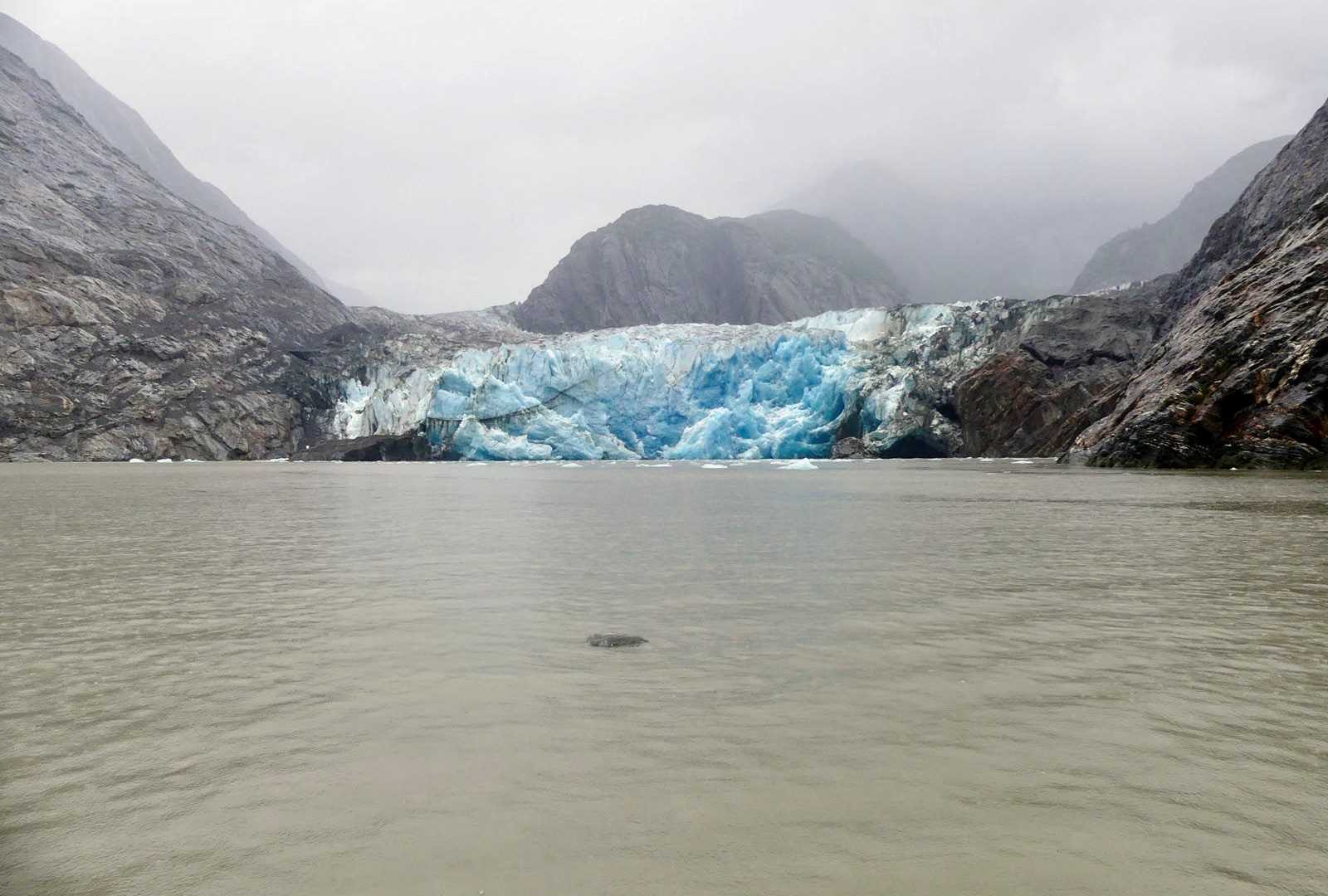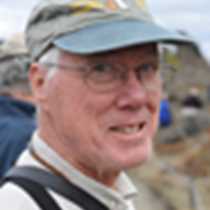For many eons glaciers have advanced down the valleys of Southeast Alaska during the cold phases of the recurrent glacial cycle, and retreated back into the mountains during the warmer interglacial phases. This exchange between cold glacial and warmer interglacial periods has alternated for the better part of the past two million years – only a blink of the eye of earth history. But even during the phases of glacial retreat, ice is still moving down from the mountains to the sea. Rocks caught up in the bottom of the ice have gouged through the underlying rock, gradually carving the deep fjords through which National Geographic Quest sailed today. Tracy Arm is one of the most striking of these. Steep walls of granite rise several thousand feet above us and descend into the depths below. Rounded peaks, smoothed by the passage of ice, attest to the height of the glacier at its maximum.
At the head of the fjord we reached the remnants of the glaciers that carved it: the Sawyer and South Sawyer glaciers. We bundled up, donned our raingear and boarded our inflatable watercraft to cruise to the face of the Sawyer Glacier. Chunks of glacial ice of all sizes (brash ice, growlers, bergy bits, and the occasional iceberg) floated in the silt-filled water. We gaped in awe at the blue color of the ice and waited in anticipation for a calving event, where ice completes its journey from the ice field above us to the sea.
But most striking was the evidence of rapid glacier retreat. Rock free of vegetation has been only recently exposed; surfaces that have been free of ice for a longer period supported dense stands of Sitka alder. Only gradually has Sitka spruce invaded into the alder, eventually to form a forest through the process of plant succession. Alaskan glaciers as a whole are continuing to thin and to retreat at the face, thus adding water to the ocean and contributing significantly to the rising sea level.
Completing our glacier cruises we headed back down the fjord, stopping at one of the myriad waterfalls, swollen with water from melting snow above and from the persistent rainfall.







